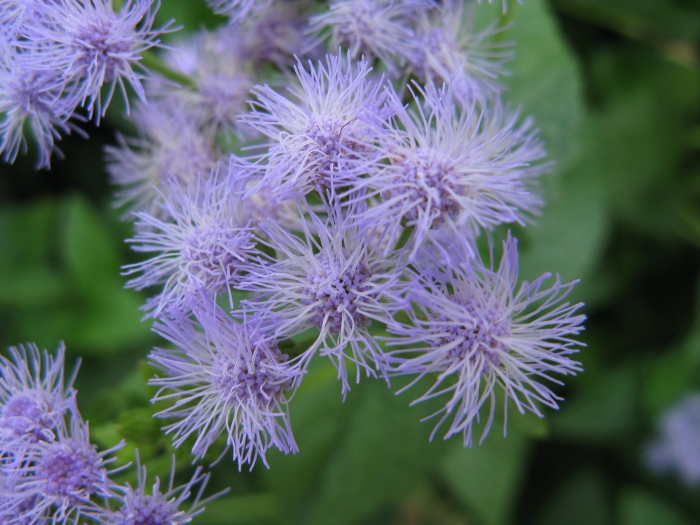Blue Mistflower
(Conoclinium coelestinum)
Blue Mistflower (Conoclinium coelestinum)
/
/

KENPEI
CC BY 3.0
Image By:
KENPEI
Recorded By:
Copyright:
CC BY 3.0
Copyright Notice:
Photo by: KENPEI | License Type: CC BY 3.0 | License URL: https://creativecommons.org/licenses/by/3.0 | Uploader: KENPEI | Publisher: Wikimedia Commons | Title: Eupatorium_coelestinum3.jpg |


















































Estimated Native Range
Summary
Conoclinium coelestinum, commonly known as Blue mistflower, is a perennial herb native to moist prairies, stream banks, and wet meadows in the Eastern and Central United States. It typically reaches a height of about 90 cm (3 ft) and features opposite, coarsely toothed leaves that are almost triangular in shape. From July to November, Blue mistflower produces clusters of fluffy, bright blue to violet flowers, with occasional white flowered forms, each head about 5 mm (1⁄4 in) long. The flowers are highly attractive to butterflies and other pollinators, adding to the plant’s ornamental value.
Blue mistflower is valued for its long blooming period and ability to attract wildlife. It is often used in butterfly gardens, rain gardens, and as part of habitat restoration projects within its native range. While it can be aggressive in garden settings due to its spreading rhizomes, this characteristic also makes it useful for erosion control in wet areas. It thrives in full sun to part shade and prefers moist to wet soils with medium to slow drainage. Gardeners should be aware of its spreading habit and consider controlling its growth through strategic planting or by using root barriers.CC BY-SA 4.0
Blue mistflower is valued for its long blooming period and ability to attract wildlife. It is often used in butterfly gardens, rain gardens, and as part of habitat restoration projects within its native range. While it can be aggressive in garden settings due to its spreading rhizomes, this characteristic also makes it useful for erosion control in wet areas. It thrives in full sun to part shade and prefers moist to wet soils with medium to slow drainage. Gardeners should be aware of its spreading habit and consider controlling its growth through strategic planting or by using root barriers.CC BY-SA 4.0
Plant Description
- Plant Type: Herb
- Height: 1-2.5 feet
- Width: 1.5-3 feet
- Growth Rate: Moderate
- Flower Color: Blue
- Flowering Season: Summer, Fall
- Leaf Retention: Deciduous
Growth Requirements
- Sun: Full Sun, Part Shade
- Water: Medium
- Drainage: Medium, Slow
Common Uses
Bee Garden, Bird Garden, Border Plant, Butterfly Garden, Deer Resistant, Drought Tolerant, Erosion Control, Groundcover, Potted Plant, Rabbit Resistant, Salt Tolerant, Showy Flowers, Water Garden
Natural Habitat
Native to moist prairies, stream banks, and wet meadows in the Eastern and Central United States
Other Names
Common Names: Mistflower, Blue Boneset, Eupatoire Céleste, Blåflockel
Scientific Names: , Conoclinium coelestinum, Eupatorium coelestinum, Conoclinium colelestinum, Conoclinium dichotomum, Eupatorium coelestinum f. illinoense, Conoclinium flaccidum, Conoclinium nepetifolium, Conoclinium nepetaefolium, Conoclinium venulosum
GBIF Accepted Name: Conoclinium coelestinum (L.) DC.